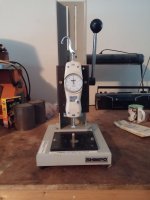It depends on how you plan to load them. Are you using commercial jacketed bullets? If so, you won't have a problem.
If you're using cast or swaged bullets that are larger in diameter than standard (usually .355" to .356"), you can have some problems. Typically that includes damaging the bullet while seating and crimping, or a bulge in the loaded round that prevents proper chambering. I always seat and taper crimp in two separate operations.
As a very high intensity cartridge, 9mm is quite sensitive to seating depth, and that can get you into trouble regardless of the bullet diameter.
I use home cast bullets almost exclusively in my 9's, and size them to .357". With all the above in mind, I've never had a problem. If you are casting and sizing your own, you need to know what groove diameter you have.

